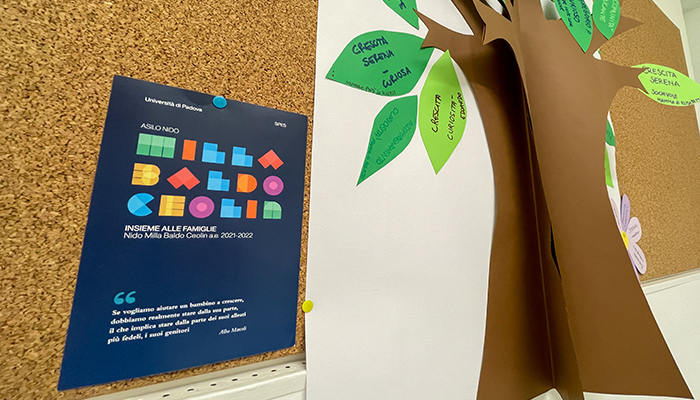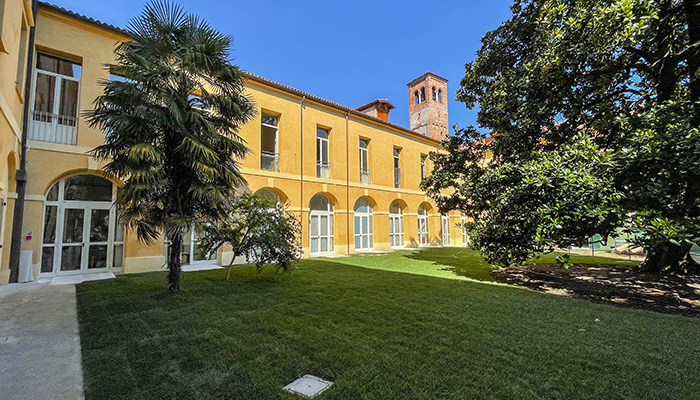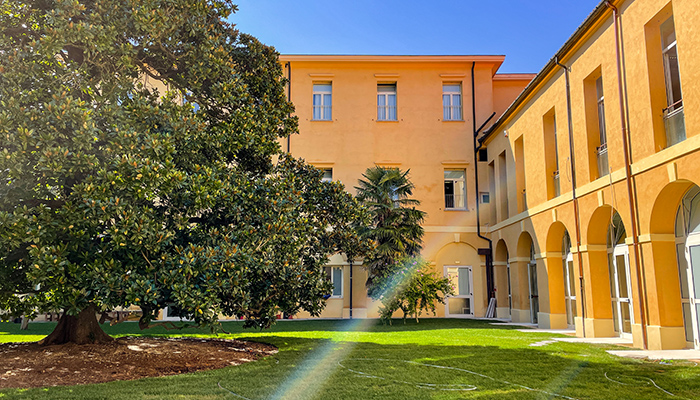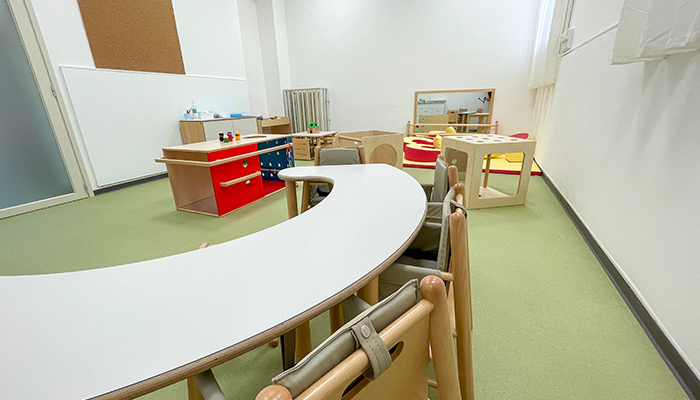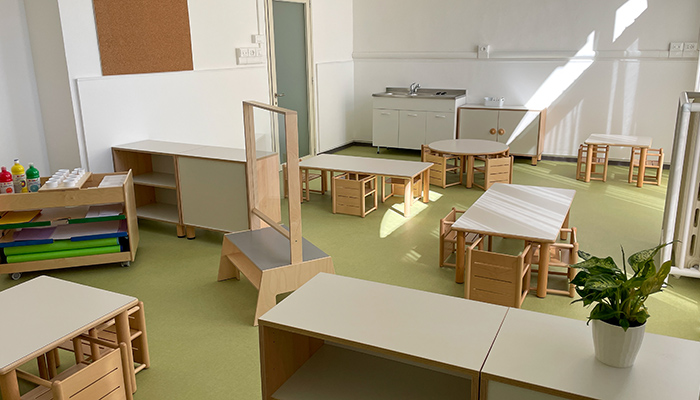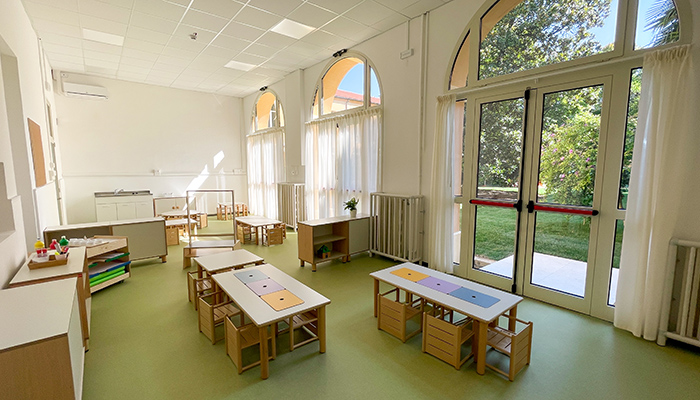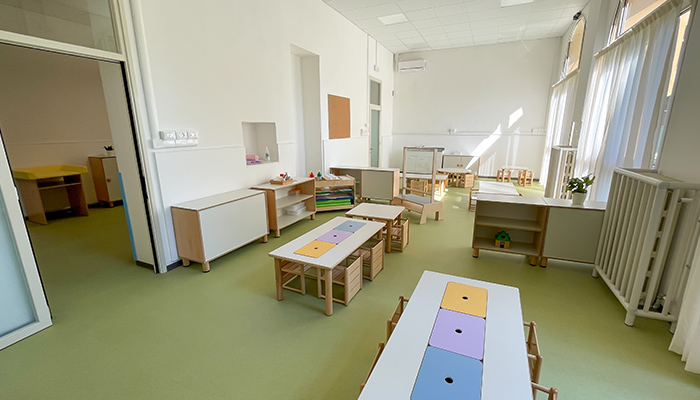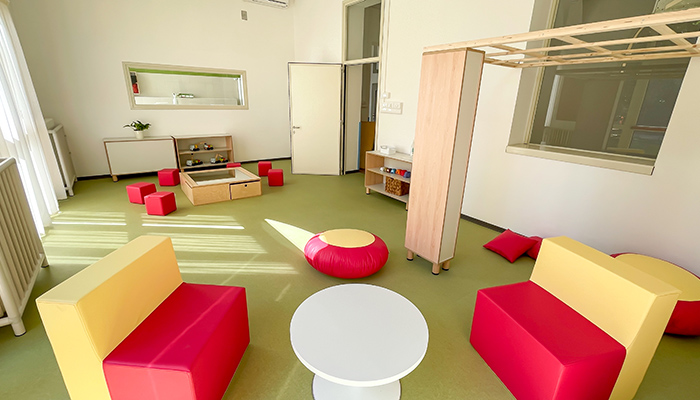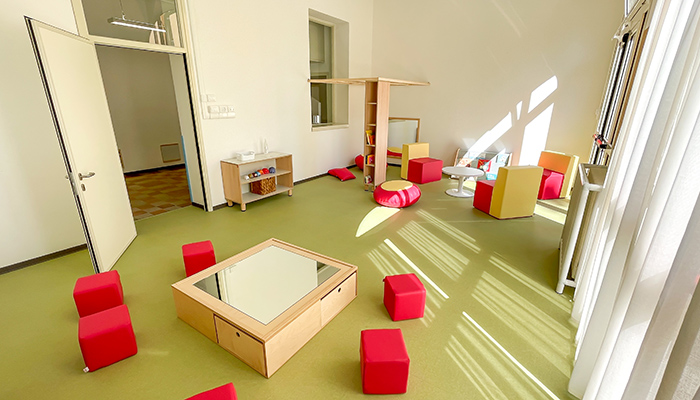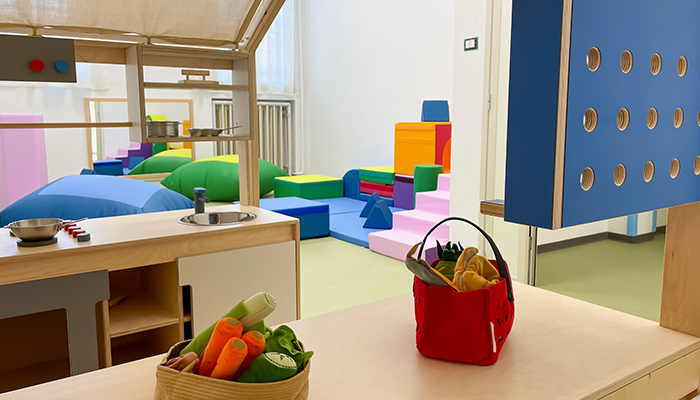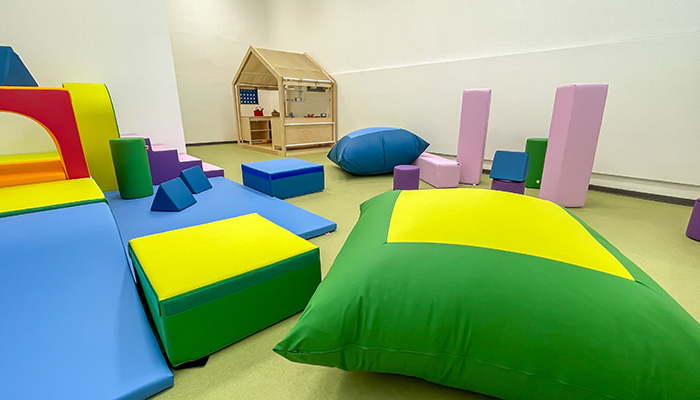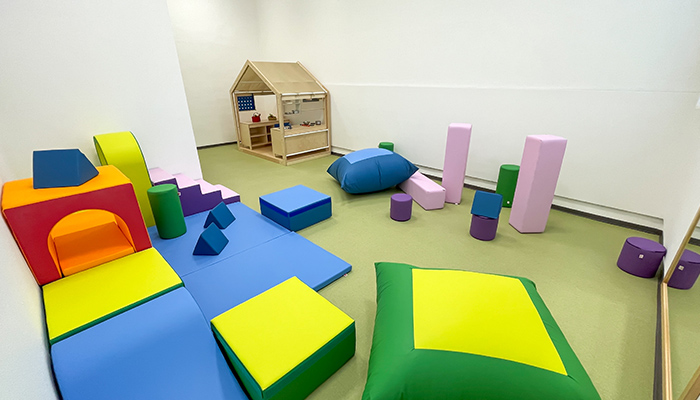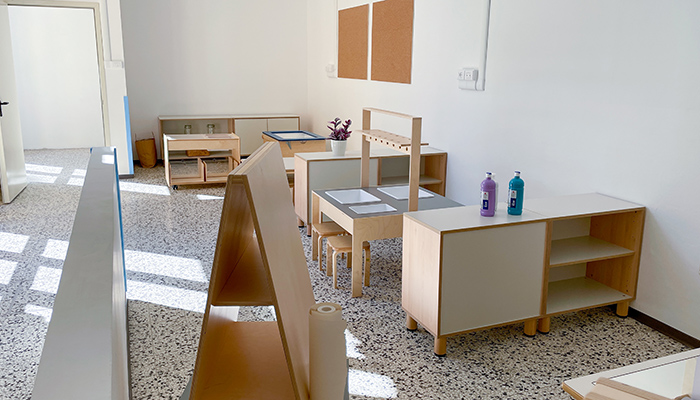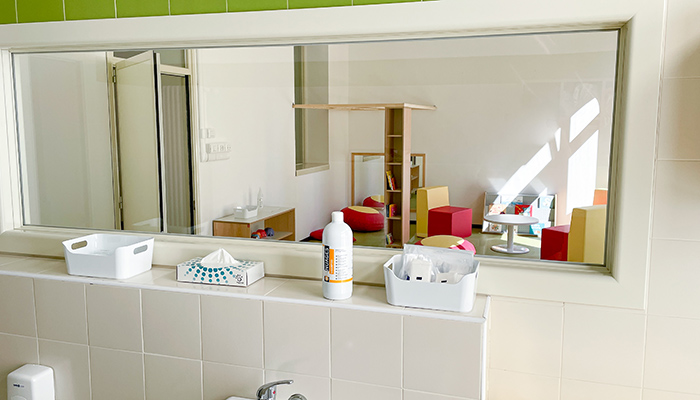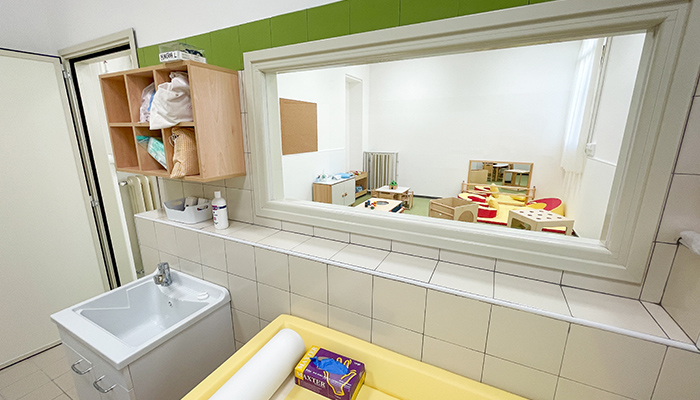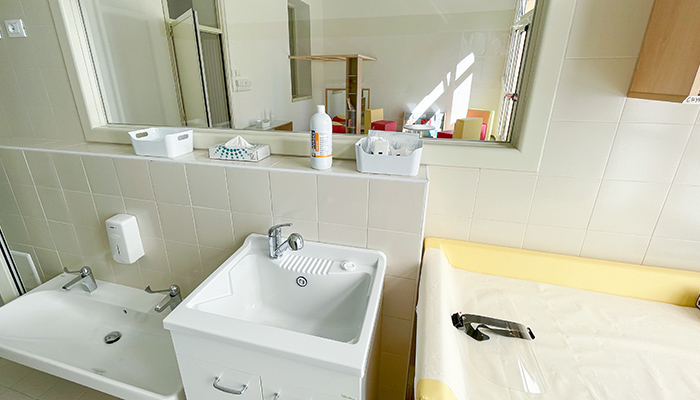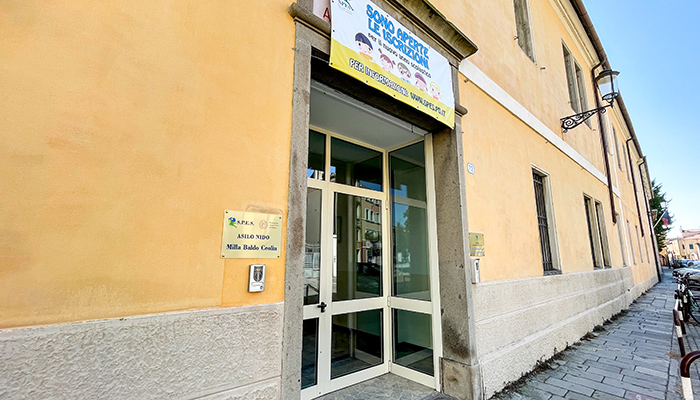Array
(
[body] => Array
(
[#theme] => field
[#weight] => -4
[#title] => Body
[#access] => 1
[#label_display] => hidden
[#view_mode] => teaser
[#language] => und
[#field_name] => body
[#field_type] => text_with_summary
[#field_translatable] => 0
[#entity_type] => node
[#bundle] => foglia_complessa
[#object] => stdClass Object
(
[vid] => 473276
[uid] => 4
[title] => Vision e mission
[log] =>
[status] => 1
[comment] => 0
[promote] => 1
[sticky] => 0
[nid] => 80595
[type] => foglia_complessa
[language] => it
[created] => 1628592177
[changed] => 1731497827
[tnid] => 0
[translate] => 0
[revision_timestamp] => 1731497827
[revision_uid] => 4
[taxonomy_vocabulary_2] => Array
(
)
[taxonomy_vocabulary_3] => Array
(
)
[taxonomy_vocabulary_8] => Array
(
)
[body] => Array
(
[und] => Array
(
[0] => Array
(
[value] =>

Vision e mission ci aiutano a condividere con la comunità il significato del progetto pedagogico, trarre ispirazione e orientare quotidianamente il nostro agire.
 Vision
Vision
Il Nido Milla Baldo Ceolin è un luogo di riferimento per il territorio, nell’elaborazione e diffusione di una aggiornata cultura dell'infanzia in cui il bambino è riconosciuto come soggetto competente, attivo e portatore di diritti sin dai primi giorni di vita. Attraverso la collaborazione con le famiglie e la comunità accademica, il nido sostiene i diritti dei bambini e i diritti delle famiglie a essere accompagnate nelle funzioni genitoriali, promuovendo le pari opportunità, il benessere familiare e la coesione sociale.

Mission
Il Nido Milla Baldo Ceolin offre opportunità educative e formative ai bambini e bambine, per il loro sviluppo armonico, adottando un approccio personalizzato, orientato a rispondere ai bisogni evolutivi di ogni bambino (cognitivi, emotivi, sociali e fisici) attraverso l’osservazione attenta, una relazione quotidiana rispettosa dei ritmi individuali di crescita, e ambienti disegnati con cura dove ogni bambino può sviluppare la sua identità, autonomia e potenzialità. Particolare cura educativa è rivolta ai bambini con difficoltà sociali, evolutive e di apprendimento.
Il Nido costruisce, inoltre, risposte differenziate alle molteplici esigenze delle famiglie, riconoscendo i loro diritti di informazione, partecipazione, formazione e co-costruzione di saperi educativi, in un contesto di collaborazione e valorizzazione delle diverse identità personali e culturali. Attenzioni si declinano nella diversità di spazi di partecipazione creati ogni anno.
Il Nido costituisce, infine, un sistema educativo d’eccellenza che si fonda sulla stretta collaborazione con le famiglie, con la comunità locale e accademica, realizzata attraverso l'innovazione educativa, la ricerca scientifica, lo scambio interdisciplinare, la riflessione e la formazione continua. L’apporto interdisciplinare di Ateneo si integra con la dimensione dell’intervento educativo e impatta sullo sviluppo professionale, non solo dell’équipe educativa del Nido Milla, ma anche degli studenti universitari afferenti ai diversi corsi di studio dell’Ateneo di Padova (fra cui il corso di laurea in Scienze dell’Educazione, sede Rovigo, con indirizzo “Servizi educativi per l’infanzia” del Dipartimento FiSPPA).
[summary] =>
[format] => 2
[safe_value] =>

Vision e mission ci aiutano a condividere con la comunità il significato del progetto pedagogico, trarre ispirazione e orientare quotidianamente il nostro agire.
 Vision
Vision
Il Nido Milla Baldo Ceolin è un luogo di riferimento per il territorio, nell’elaborazione e diffusione di una aggiornata cultura dell'infanzia in cui il bambino è riconosciuto come soggetto competente, attivo e portatore di diritti sin dai primi giorni di vita. Attraverso la collaborazione con le famiglie e la comunità accademica, il nido sostiene i diritti dei bambini e i diritti delle famiglie a essere accompagnate nelle funzioni genitoriali, promuovendo le pari opportunità, il benessere familiare e la coesione sociale.

Mission
Il Nido Milla Baldo Ceolin offre opportunità educative e formative ai bambini e bambine, per il loro sviluppo armonico, adottando un approccio personalizzato, orientato a rispondere ai bisogni evolutivi di ogni bambino (cognitivi, emotivi, sociali e fisici) attraverso l’osservazione attenta, una relazione quotidiana rispettosa dei ritmi individuali di crescita, e ambienti disegnati con cura dove ogni bambino può sviluppare la sua identità, autonomia e potenzialità. Particolare cura educativa è rivolta ai bambini con difficoltà sociali, evolutive e di apprendimento.
Il Nido costruisce, inoltre, risposte differenziate alle molteplici esigenze delle famiglie, riconoscendo i loro diritti di informazione, partecipazione, formazione e co-costruzione di saperi educativi, in un contesto di collaborazione e valorizzazione delle diverse identità personali e culturali. Attenzioni si declinano nella diversità di spazi di partecipazione creati ogni anno.
Il Nido costituisce, infine, un sistema educativo d’eccellenza che si fonda sulla stretta collaborazione con le famiglie, con la comunità locale e accademica, realizzata attraverso l'innovazione educativa, la ricerca scientifica, lo scambio interdisciplinare, la riflessione e la formazione continua. L’apporto interdisciplinare di Ateneo si integra con la dimensione dell’intervento educativo e impatta sullo sviluppo professionale, non solo dell’équipe educativa del Nido Milla, ma anche degli studenti universitari afferenti ai diversi corsi di studio dell’Ateneo di Padova (fra cui il corso di laurea in Scienze dell’Educazione, sede Rovigo, con indirizzo “Servizi educativi per l’infanzia” del Dipartimento FiSPPA).
[safe_summary] =>
)
)
)
[field_foglia_complessa_accordion] => Array
(
[und] => Array
(
[0] => Array
(
[nid] => 80968
[access] => 1
[node] => stdClass Object
(
[vid] => 465802
[uid] => 102
[title] => Nido Milla chi è Milla
[log] =>
[status] => 1
[comment] => 0
[promote] => 1
[sticky] => 0
[nid] => 80968
[type] => accordion
[language] => it
[created] => 1631007725
[changed] => 1722417909
[tnid] => 0
[translate] => 0
[revision_timestamp] => 1722417909
[revision_uid] => 4
[taxonomy_vocabulary_8] => Array
(
)
[body] => Array
(
[und] => Array
(
[0] => Array
(
[value] =>
"Milla"
Il nome del Nido rende omaggio a una donna straordinaria e tenace, una studiosa infaticabile conosciuta in tutto il mondo, allieva prima e collega poi dei più grandi fisici internazionali. Massimilla Baldo Ceolin, per tutti semplicemente “Milla”, è stata una delle pioniere della fisica delle particelle, e con le sue ricerche d’avanguardia si guadagnò soprannomi leggendari come “la signora del neutrino” e “la signora dell’antilambda”.
La scelta del nome per il Nido non solo celebra i meriti di questa scienziata straordinaria, ma punta anche a valorizzare e promuovere la presenza delle donne nel campo delle scienze. Questo è in piena armonia con la politica di promozione delle pari opportunità di genere e della giustizia sociale alla quale il Nido risponde.
Approfondimenti
[summary] =>
[format] => 2
[safe_value] =>
"Milla"
Il nome del Nido rende omaggio a una donna straordinaria e tenace, una studiosa infaticabile conosciuta in tutto il mondo, allieva prima e collega poi dei più grandi fisici internazionali. Massimilla Baldo Ceolin, per tutti semplicemente “Milla”, è stata una delle pioniere della fisica delle particelle, e con le sue ricerche d’avanguardia si guadagnò soprannomi leggendari come “la signora del neutrino” e “la signora dell’antilambda”.
La scelta del nome per il Nido non solo celebra i meriti di questa scienziata straordinaria, ma punta anche a valorizzare e promuovere la presenza delle donne nel campo delle scienze. Questo è in piena armonia con la politica di promozione delle pari opportunità di genere e della giustizia sociale alla quale il Nido risponde.
Approfondimenti
[safe_summary] =>
)
)
)
[field_accordion_element] => Array
(
)
[field_accordion_sottotitolo] => Array
(
)
[field_accordion_titolo_fro] => Array
(
)
[field_allegato_element] => Array
(
)
[name] => simonetta.admin
[picture] => 0
[data] => b:0;
[num_revisions] => 7
[current_revision_id] => 465802
[is_current] => 1
[is_pending] =>
[revision_moderation] =>
)
)
[1] => Array
(
[nid] => 80605
[access] => 1
[node] => stdClass Object
(
[vid] => 366316
[uid] => 4
[title] => Nido MIlla fascia grafica di chiusura pagina
[log] =>
[status] => 1
[comment] => 0
[promote] => 1
[sticky] => 0
[nid] => 80605
[type] => accordion
[language] => it
[created] => 1628678018
[changed] => 1631620601
[tnid] => 0
[translate] => 0
[revision_timestamp] => 1631620601
[revision_uid] => 102
[taxonomy_vocabulary_8] => Array
(
)
[body] => Array
(
[und] => Array
(
[0] => Array
(
[value] =>

[summary] =>
[format] => 2
[safe_value] =>

[safe_summary] =>
)
)
)
[field_accordion_element] => Array
(
)
[field_accordion_sottotitolo] => Array
(
)
[field_accordion_titolo_fro] => Array
(
)
[field_allegato_element] => Array
(
)
[name] => simonetta.capparotto
[picture] => 0
[data] => a:2:{s:13:"form_build_id";s:37:"form-fe5ebd9e5e240c4294455b6b42fa6a76";s:14:"wysiwyg_status";a:1:{i:1;i:1;}}
[num_revisions] => 3
[current_revision_id] => 366316
[is_current] => 1
[is_pending] =>
[revision_moderation] =>
)
)
)
)
[field_foglia_complessa_allegato] => Array
(
)
[field_image_fc] => Array
(
)
[field_testo_opzionale_fc] => Array
(
)
[field_immagine_top] => Array
(
)
[field_immagine_bottom] => Array
(
)
[field_immagine_decorativa_latera] => Array
(
[und] => Array
(
[0] => Array
(
[fid] => 60003
[uid] => 4
[filename] => bianco.jpg
[uri] => public://bianco_1.jpg
[filemime] => image/jpeg
[filesize] => 884
[status] => 1
[timestamp] => 1634298206
[type] => image
[field_file_image_alt_text] => Array
(
[und] => Array
(
[0] => Array
(
[value] => Bianco laterale
[format] =>
[safe_value] => Bianco laterale
)
)
)
[field_file_image_title_text] => Array
(
)
[field_folder] => Array
(
[und] => Array
(
[0] => Array
(
[tid] => 2048
)
)
)
[metatags] => Array
(
[und] => Array
(
[title] => Array
(
[value] => [current-page:title] | [current-page:pager][site:name]
[default] => [current-page:title] | [current-page:pager][site:name]
)
[description] => Array
(
[value] =>
)
[abstract] => Array
(
[value] =>
)
[keywords] => Array
(
[value] =>
)
[robots] => Array
(
[value] => Array
(
[index] => 0
[follow] => 0
[noindex] => 0
[nofollow] => 0
[noarchive] => 0
[nosnippet] => 0
[noodp] => 0
[noydir] => 0
[noimageindex] => 0
[notranslate] => 0
)
)
[news_keywords] => Array
(
[value] =>
)
[standout] => Array
(
[value] =>
)
[rating] => Array
(
[value] =>
)
[referrer] => Array
(
[value] =>
)
[rights] => Array
(
[value] =>
)
[image_src] => Array
(
[value] =>
)
[canonical] => Array
(
[value] => [current-page:url:absolute]
[default] => [current-page:url:absolute]
)
[set_cookie] => Array
(
[value] =>
)
[shortlink] => Array
(
[value] => [current-page:url:unaliased]
[default] => [current-page:url:unaliased]
)
[original-source] => Array
(
[value] =>
)
[prev] => Array
(
[value] =>
)
[next] => Array
(
[value] =>
)
[content-language] => Array
(
[value] =>
)
[geo.position] => Array
(
[value] =>
)
[geo.placename] => Array
(
[value] =>
)
[geo.region] => Array
(
[value] =>
)
[icbm] => Array
(
[value] =>
)
[refresh] => Array
(
[value] =>
)
[revisit-after] => Array
(
[value] =>
[period] =>
)
[pragma] => Array
(
[value] =>
)
[cache-control] => Array
(
[value] =>
)
[expires] => Array
(
[value] =>
)
[og:type] => Array
(
[value] => article
[default] => article
)
[og:url] => Array
(
[value] => [current-page:url:absolute]
[default] => [current-page:url:absolute]
)
[og:title] => Array
(
[value] => [current-page:title]
[default] => [current-page:title]
)
[og:determiner] => Array
(
[value] =>
)
[og:description] => Array
(
[value] =>
)
[og:updated_time] => Array
(
[value] =>
)
[og:see_also] => Array
(
[value] =>
)
[og:image] => Array
(
[value] =>
)
[og:image:url] => Array
(
[value] =>
)
[og:image:secure_url] => Array
(
[value] =>
)
[og:image:type] => Array
(
[value] =>
)
[og:image:width] => Array
(
[value] =>
)
[og:image:height] => Array
(
[value] =>
)
[og:latitude] => Array
(
[value] =>
)
[og:longitude] => Array
(
[value] =>
)
[og:street_address] => Array
(
[value] =>
)
[og:locality] => Array
(
[value] =>
)
[og:region] => Array
(
[value] =>
)
[og:postal_code] => Array
(
[value] =>
)
[og:country_name] => Array
(
[value] =>
)
[og:email] => Array
(
[value] =>
)
[og:phone_number] => Array
(
[value] =>
)
[og:fax_number] => Array
(
[value] =>
)
[og:locale] => Array
(
[value] =>
)
[og:locale:alternate] => Array
(
[value] =>
)
[article:author] => Array
(
[value] =>
)
[article:publisher] => Array
(
[value] =>
)
[article:section] => Array
(
[value] =>
)
[article:tag] => Array
(
[value] =>
)
[article:published_time] => Array
(
[value] =>
)
[article:modified_time] => Array
(
[value] =>
)
[article:expiration_time] => Array
(
[value] =>
)
[profile:first_name] => Array
(
[value] =>
)
[profile:last_name] => Array
(
[value] =>
)
[profile:username] => Array
(
[value] =>
)
[profile:gender] => Array
(
[value] =>
)
[og:audio] => Array
(
[value] =>
)
[og:audio:secure_url] => Array
(
[value] =>
)
[og:audio:type] => Array
(
[value] =>
)
[book:author] => Array
(
[value] =>
)
[book:isbn] => Array
(
[value] =>
)
[book:release_date] => Array
(
[value] =>
)
[book:tag] => Array
(
[value] =>
)
[og:video:url] => Array
(
[value] =>
)
[og:video:secure_url] => Array
(
[value] =>
)
[og:video:width] => Array
(
[value] =>
)
[og:video:height] => Array
(
[value] =>
)
[og:video:type] => Array
(
[value] =>
)
[video:actor] => Array
(
[value] =>
)
[video:actor:role] => Array
(
[value] =>
)
[video:director] => Array
(
[value] =>
)
[video:writer] => Array
(
[value] =>
)
[video:duration] => Array
(
[value] =>
)
[video:release_date] => Array
(
[value] =>
)
[video:tag] => Array
(
[value] =>
)
[video:series] => Array
(
[value] =>
)
)
)
[alt] => Bianco laterale
[metadata] => Array
(
[height] => 100
[width] => 100
)
[height] => 100
[width] => 100
[title] =>
)
)
)
[field_link_in_evidenza] => Array
(
)
[field_usa_layout_pagina_link] => Array
(
[und] => Array
(
[0] => Array
(
[value] => 0
)
)
)
[field_etichetta_link_in_evidenza] => Array
(
)
[field_tabs] => Array
(
)
[field_condividi_social] => Array
(
[und] => Array
(
[0] => Array
(
[value] => 0
)
)
)
[field_formato_immagine] => Array
(
)
[field_video_link] => Array
(
)
[field_nosidebar] => Array
(
[und] => Array
(
[0] => Array
(
[value] => 1
)
)
)
[field_chatbot] => Array
(
[und] => Array
(
[0] => Array
(
[value] => 0
)
)
)
[field_chatbot_codice_chat] => Array
(
)
[field_header_custom] => Array
(
[und] => Array
(
[0] => Array
(
[value] => 0
)
)
)
[field_header_custom_ref] => Array
(
)
[field_accessiway] => Array
(
[und] => Array
(
[0] => Array
(
[value] => 0
)
)
)
[field_footer_custom] => Array
(
[und] => Array
(
[0] => Array
(
[value] => 0
)
)
)
[field_footer_custom_ref] => Array
(
)
[field_usa_layout_hero] => Array
(
[und] => Array
(
[0] => Array
(
[value] => 0
)
)
)
[field_note_interne] => Array
(
)
[field_url_en_page] => Array
(
)
[field_crawler_ai] => Array
(
)
[path] => Array
(
[pathauto] => 0
)
[name] => simonetta.capparotto
[picture] => 0
[data] => a:2:{s:13:"form_build_id";s:37:"form-fe5ebd9e5e240c4294455b6b42fa6a76";s:14:"wysiwyg_status";a:1:{i:1;i:1;}}
[num_revisions] => 21
[current_revision_id] => 473276
[is_current] => 1
[is_pending] =>
[revision_moderation] =>
[entity_view_prepared] => 1
)
[#items] => Array
(
[0] => Array
(
[value] =>

Vision e mission ci aiutano a condividere con la comunità il significato del progetto pedagogico, trarre ispirazione e orientare quotidianamente il nostro agire.
 Vision
Vision
Il Nido Milla Baldo Ceolin è un luogo di riferimento per il territorio, nell’elaborazione e diffusione di una aggiornata cultura dell'infanzia in cui il bambino è riconosciuto come soggetto competente, attivo e portatore di diritti sin dai primi giorni di vita. Attraverso la collaborazione con le famiglie e la comunità accademica, il nido sostiene i diritti dei bambini e i diritti delle famiglie a essere accompagnate nelle funzioni genitoriali, promuovendo le pari opportunità, il benessere familiare e la coesione sociale.

Mission
Il Nido Milla Baldo Ceolin offre opportunità educative e formative ai bambini e bambine, per il loro sviluppo armonico, adottando un approccio personalizzato, orientato a rispondere ai bisogni evolutivi di ogni bambino (cognitivi, emotivi, sociali e fisici) attraverso l’osservazione attenta, una relazione quotidiana rispettosa dei ritmi individuali di crescita, e ambienti disegnati con cura dove ogni bambino può sviluppare la sua identità, autonomia e potenzialità. Particolare cura educativa è rivolta ai bambini con difficoltà sociali, evolutive e di apprendimento.
Il Nido costruisce, inoltre, risposte differenziate alle molteplici esigenze delle famiglie, riconoscendo i loro diritti di informazione, partecipazione, formazione e co-costruzione di saperi educativi, in un contesto di collaborazione e valorizzazione delle diverse identità personali e culturali. Attenzioni si declinano nella diversità di spazi di partecipazione creati ogni anno.
Il Nido costituisce, infine, un sistema educativo d’eccellenza che si fonda sulla stretta collaborazione con le famiglie, con la comunità locale e accademica, realizzata attraverso l'innovazione educativa, la ricerca scientifica, lo scambio interdisciplinare, la riflessione e la formazione continua. L’apporto interdisciplinare di Ateneo si integra con la dimensione dell’intervento educativo e impatta sullo sviluppo professionale, non solo dell’équipe educativa del Nido Milla, ma anche degli studenti universitari afferenti ai diversi corsi di studio dell’Ateneo di Padova (fra cui il corso di laurea in Scienze dell’Educazione, sede Rovigo, con indirizzo “Servizi educativi per l’infanzia” del Dipartimento FiSPPA).
[summary] =>
[format] => 2
[safe_value] =>

Vision e mission ci aiutano a condividere con la comunità il significato del progetto pedagogico, trarre ispirazione e orientare quotidianamente il nostro agire.
 Vision
Vision
Il Nido Milla Baldo Ceolin è un luogo di riferimento per il territorio, nell’elaborazione e diffusione di una aggiornata cultura dell'infanzia in cui il bambino è riconosciuto come soggetto competente, attivo e portatore di diritti sin dai primi giorni di vita. Attraverso la collaborazione con le famiglie e la comunità accademica, il nido sostiene i diritti dei bambini e i diritti delle famiglie a essere accompagnate nelle funzioni genitoriali, promuovendo le pari opportunità, il benessere familiare e la coesione sociale.

Mission
Il Nido Milla Baldo Ceolin offre opportunità educative e formative ai bambini e bambine, per il loro sviluppo armonico, adottando un approccio personalizzato, orientato a rispondere ai bisogni evolutivi di ogni bambino (cognitivi, emotivi, sociali e fisici) attraverso l’osservazione attenta, una relazione quotidiana rispettosa dei ritmi individuali di crescita, e ambienti disegnati con cura dove ogni bambino può sviluppare la sua identità, autonomia e potenzialità. Particolare cura educativa è rivolta ai bambini con difficoltà sociali, evolutive e di apprendimento.
Il Nido costruisce, inoltre, risposte differenziate alle molteplici esigenze delle famiglie, riconoscendo i loro diritti di informazione, partecipazione, formazione e co-costruzione di saperi educativi, in un contesto di collaborazione e valorizzazione delle diverse identità personali e culturali. Attenzioni si declinano nella diversità di spazi di partecipazione creati ogni anno.
Il Nido costituisce, infine, un sistema educativo d’eccellenza che si fonda sulla stretta collaborazione con le famiglie, con la comunità locale e accademica, realizzata attraverso l'innovazione educativa, la ricerca scientifica, lo scambio interdisciplinare, la riflessione e la formazione continua. L’apporto interdisciplinare di Ateneo si integra con la dimensione dell’intervento educativo e impatta sullo sviluppo professionale, non solo dell’équipe educativa del Nido Milla, ma anche degli studenti universitari afferenti ai diversi corsi di studio dell’Ateneo di Padova (fra cui il corso di laurea in Scienze dell’Educazione, sede Rovigo, con indirizzo “Servizi educativi per l’infanzia” del Dipartimento FiSPPA).
[safe_summary] =>
)
)
[#formatter] => text_summary_or_trimmed
[0] => Array
(
[#markup] =>

Vision e mission ci aiutano a condividere con la comunità il significato del progetto pedagogico, trarre ispirazione e orientare quotidianamente il nostro agire.
 Vision
Vision
)
)
[field_foglia_complessa_accordion] => Array
(
[#theme] => field
[#weight] => -1
[#title] => accordion
[#access] => 1
[#label_display] => above
[#view_mode] => teaser
[#language] => und
[#field_name] => field_foglia_complessa_accordion
[#field_type] => node_reference
[#field_translatable] => 0
[#entity_type] => node
[#bundle] => foglia_complessa
[#object] => stdClass Object
(
[vid] => 473276
[uid] => 4
[title] => Vision e mission
[log] =>
[status] => 1
[comment] => 0
[promote] => 1
[sticky] => 0
[nid] => 80595
[type] => foglia_complessa
[language] => it
[created] => 1628592177
[changed] => 1731497827
[tnid] => 0
[translate] => 0
[revision_timestamp] => 1731497827
[revision_uid] => 4
[taxonomy_vocabulary_2] => Array
(
)
[taxonomy_vocabulary_3] => Array
(
)
[taxonomy_vocabulary_8] => Array
(
)
[body] => Array
(
[und] => Array
(
[0] => Array
(
[value] =>

Vision e mission ci aiutano a condividere con la comunità il significato del progetto pedagogico, trarre ispirazione e orientare quotidianamente il nostro agire.
 Vision
Vision
Il Nido Milla Baldo Ceolin è un luogo di riferimento per il territorio, nell’elaborazione e diffusione di una aggiornata cultura dell'infanzia in cui il bambino è riconosciuto come soggetto competente, attivo e portatore di diritti sin dai primi giorni di vita. Attraverso la collaborazione con le famiglie e la comunità accademica, il nido sostiene i diritti dei bambini e i diritti delle famiglie a essere accompagnate nelle funzioni genitoriali, promuovendo le pari opportunità, il benessere familiare e la coesione sociale.

Mission
Il Nido Milla Baldo Ceolin offre opportunità educative e formative ai bambini e bambine, per il loro sviluppo armonico, adottando un approccio personalizzato, orientato a rispondere ai bisogni evolutivi di ogni bambino (cognitivi, emotivi, sociali e fisici) attraverso l’osservazione attenta, una relazione quotidiana rispettosa dei ritmi individuali di crescita, e ambienti disegnati con cura dove ogni bambino può sviluppare la sua identità, autonomia e potenzialità. Particolare cura educativa è rivolta ai bambini con difficoltà sociali, evolutive e di apprendimento.
Il Nido costruisce, inoltre, risposte differenziate alle molteplici esigenze delle famiglie, riconoscendo i loro diritti di informazione, partecipazione, formazione e co-costruzione di saperi educativi, in un contesto di collaborazione e valorizzazione delle diverse identità personali e culturali. Attenzioni si declinano nella diversità di spazi di partecipazione creati ogni anno.
Il Nido costituisce, infine, un sistema educativo d’eccellenza che si fonda sulla stretta collaborazione con le famiglie, con la comunità locale e accademica, realizzata attraverso l'innovazione educativa, la ricerca scientifica, lo scambio interdisciplinare, la riflessione e la formazione continua. L’apporto interdisciplinare di Ateneo si integra con la dimensione dell’intervento educativo e impatta sullo sviluppo professionale, non solo dell’équipe educativa del Nido Milla, ma anche degli studenti universitari afferenti ai diversi corsi di studio dell’Ateneo di Padova (fra cui il corso di laurea in Scienze dell’Educazione, sede Rovigo, con indirizzo “Servizi educativi per l’infanzia” del Dipartimento FiSPPA).
[summary] =>
[format] => 2
[safe_value] =>

Vision e mission ci aiutano a condividere con la comunità il significato del progetto pedagogico, trarre ispirazione e orientare quotidianamente il nostro agire.
 Vision
Vision
Il Nido Milla Baldo Ceolin è un luogo di riferimento per il territorio, nell’elaborazione e diffusione di una aggiornata cultura dell'infanzia in cui il bambino è riconosciuto come soggetto competente, attivo e portatore di diritti sin dai primi giorni di vita. Attraverso la collaborazione con le famiglie e la comunità accademica, il nido sostiene i diritti dei bambini e i diritti delle famiglie a essere accompagnate nelle funzioni genitoriali, promuovendo le pari opportunità, il benessere familiare e la coesione sociale.

Mission
Il Nido Milla Baldo Ceolin offre opportunità educative e formative ai bambini e bambine, per il loro sviluppo armonico, adottando un approccio personalizzato, orientato a rispondere ai bisogni evolutivi di ogni bambino (cognitivi, emotivi, sociali e fisici) attraverso l’osservazione attenta, una relazione quotidiana rispettosa dei ritmi individuali di crescita, e ambienti disegnati con cura dove ogni bambino può sviluppare la sua identità, autonomia e potenzialità. Particolare cura educativa è rivolta ai bambini con difficoltà sociali, evolutive e di apprendimento.
Il Nido costruisce, inoltre, risposte differenziate alle molteplici esigenze delle famiglie, riconoscendo i loro diritti di informazione, partecipazione, formazione e co-costruzione di saperi educativi, in un contesto di collaborazione e valorizzazione delle diverse identità personali e culturali. Attenzioni si declinano nella diversità di spazi di partecipazione creati ogni anno.
Il Nido costituisce, infine, un sistema educativo d’eccellenza che si fonda sulla stretta collaborazione con le famiglie, con la comunità locale e accademica, realizzata attraverso l'innovazione educativa, la ricerca scientifica, lo scambio interdisciplinare, la riflessione e la formazione continua. L’apporto interdisciplinare di Ateneo si integra con la dimensione dell’intervento educativo e impatta sullo sviluppo professionale, non solo dell’équipe educativa del Nido Milla, ma anche degli studenti universitari afferenti ai diversi corsi di studio dell’Ateneo di Padova (fra cui il corso di laurea in Scienze dell’Educazione, sede Rovigo, con indirizzo “Servizi educativi per l’infanzia” del Dipartimento FiSPPA).
[safe_summary] =>
)
)
)
[field_foglia_complessa_accordion] => Array
(
[und] => Array
(
[0] => Array
(
[nid] => 80968
[access] => 1
[node] => stdClass Object
(
[vid] => 465802
[uid] => 102
[title] => Nido Milla chi è Milla
[log] =>
[status] => 1
[comment] => 0
[promote] => 1
[sticky] => 0
[nid] => 80968
[type] => accordion
[language] => it
[created] => 1631007725
[changed] => 1722417909
[tnid] => 0
[translate] => 0
[revision_timestamp] => 1722417909
[revision_uid] => 4
[taxonomy_vocabulary_8] => Array
(
)
[body] => Array
(
[und] => Array
(
[0] => Array
(
[value] =>
"Milla"
Il nome del Nido rende omaggio a una donna straordinaria e tenace, una studiosa infaticabile conosciuta in tutto il mondo, allieva prima e collega poi dei più grandi fisici internazionali. Massimilla Baldo Ceolin, per tutti semplicemente “Milla”, è stata una delle pioniere della fisica delle particelle, e con le sue ricerche d’avanguardia si guadagnò soprannomi leggendari come “la signora del neutrino” e “la signora dell’antilambda”.
La scelta del nome per il Nido non solo celebra i meriti di questa scienziata straordinaria, ma punta anche a valorizzare e promuovere la presenza delle donne nel campo delle scienze. Questo è in piena armonia con la politica di promozione delle pari opportunità di genere e della giustizia sociale alla quale il Nido risponde.
Approfondimenti
[summary] =>
[format] => 2
[safe_value] =>
"Milla"
Il nome del Nido rende omaggio a una donna straordinaria e tenace, una studiosa infaticabile conosciuta in tutto il mondo, allieva prima e collega poi dei più grandi fisici internazionali. Massimilla Baldo Ceolin, per tutti semplicemente “Milla”, è stata una delle pioniere della fisica delle particelle, e con le sue ricerche d’avanguardia si guadagnò soprannomi leggendari come “la signora del neutrino” e “la signora dell’antilambda”.
La scelta del nome per il Nido non solo celebra i meriti di questa scienziata straordinaria, ma punta anche a valorizzare e promuovere la presenza delle donne nel campo delle scienze. Questo è in piena armonia con la politica di promozione delle pari opportunità di genere e della giustizia sociale alla quale il Nido risponde.
Approfondimenti
[safe_summary] =>
)
)
)
[field_accordion_element] => Array
(
)
[field_accordion_sottotitolo] => Array
(
)
[field_accordion_titolo_fro] => Array
(
)
[field_allegato_element] => Array
(
)
[name] => simonetta.admin
[picture] => 0
[data] => b:0;
[num_revisions] => 7
[current_revision_id] => 465802
[is_current] => 1
[is_pending] =>
[revision_moderation] =>
)
)
[1] => Array
(
[nid] => 80605
[access] => 1
[node] => stdClass Object
(
[vid] => 366316
[uid] => 4
[title] => Nido MIlla fascia grafica di chiusura pagina
[log] =>
[status] => 1
[comment] => 0
[promote] => 1
[sticky] => 0
[nid] => 80605
[type] => accordion
[language] => it
[created] => 1628678018
[changed] => 1631620601
[tnid] => 0
[translate] => 0
[revision_timestamp] => 1631620601
[revision_uid] => 102
[taxonomy_vocabulary_8] => Array
(
)
[body] => Array
(
[und] => Array
(
[0] => Array
(
[value] =>

[summary] =>
[format] => 2
[safe_value] =>

[safe_summary] =>
)
)
)
[field_accordion_element] => Array
(
)
[field_accordion_sottotitolo] => Array
(
)
[field_accordion_titolo_fro] => Array
(
)
[field_allegato_element] => Array
(
)
[name] => simonetta.capparotto
[picture] => 0
[data] => a:2:{s:13:"form_build_id";s:37:"form-fe5ebd9e5e240c4294455b6b42fa6a76";s:14:"wysiwyg_status";a:1:{i:1;i:1;}}
[num_revisions] => 3
[current_revision_id] => 366316
[is_current] => 1
[is_pending] =>
[revision_moderation] =>
)
)
)
)
[field_foglia_complessa_allegato] => Array
(
)
[field_image_fc] => Array
(
)
[field_testo_opzionale_fc] => Array
(
)
[field_immagine_top] => Array
(
)
[field_immagine_bottom] => Array
(
)
[field_immagine_decorativa_latera] => Array
(
[und] => Array
(
[0] => Array
(
[fid] => 60003
[uid] => 4
[filename] => bianco.jpg
[uri] => public://bianco_1.jpg
[filemime] => image/jpeg
[filesize] => 884
[status] => 1
[timestamp] => 1634298206
[type] => image
[field_file_image_alt_text] => Array
(
[und] => Array
(
[0] => Array
(
[value] => Bianco laterale
[format] =>
[safe_value] => Bianco laterale
)
)
)
[field_file_image_title_text] => Array
(
)
[field_folder] => Array
(
[und] => Array
(
[0] => Array
(
[tid] => 2048
)
)
)
[metatags] => Array
(
[und] => Array
(
[title] => Array
(
[value] => [current-page:title] | [current-page:pager][site:name]
[default] => [current-page:title] | [current-page:pager][site:name]
)
[description] => Array
(
[value] =>
)
[abstract] => Array
(
[value] =>
)
[keywords] => Array
(
[value] =>
)
[robots] => Array
(
[value] => Array
(
[index] => 0
[follow] => 0
[noindex] => 0
[nofollow] => 0
[noarchive] => 0
[nosnippet] => 0
[noodp] => 0
[noydir] => 0
[noimageindex] => 0
[notranslate] => 0
)
)
[news_keywords] => Array
(
[value] =>
)
[standout] => Array
(
[value] =>
)
[rating] => Array
(
[value] =>
)
[referrer] => Array
(
[value] =>
)
[rights] => Array
(
[value] =>
)
[image_src] => Array
(
[value] =>
)
[canonical] => Array
(
[value] => [current-page:url:absolute]
[default] => [current-page:url:absolute]
)
[set_cookie] => Array
(
[value] =>
)
[shortlink] => Array
(
[value] => [current-page:url:unaliased]
[default] => [current-page:url:unaliased]
)
[original-source] => Array
(
[value] =>
)
[prev] => Array
(
[value] =>
)
[next] => Array
(
[value] =>
)
[content-language] => Array
(
[value] =>
)
[geo.position] => Array
(
[value] =>
)
[geo.placename] => Array
(
[value] =>
)
[geo.region] => Array
(
[value] =>
)
[icbm] => Array
(
[value] =>
)
[refresh] => Array
(
[value] =>
)
[revisit-after] => Array
(
[value] =>
[period] =>
)
[pragma] => Array
(
[value] =>
)
[cache-control] => Array
(
[value] =>
)
[expires] => Array
(
[value] =>
)
[og:type] => Array
(
[value] => article
[default] => article
)
[og:url] => Array
(
[value] => [current-page:url:absolute]
[default] => [current-page:url:absolute]
)
[og:title] => Array
(
[value] => [current-page:title]
[default] => [current-page:title]
)
[og:determiner] => Array
(
[value] =>
)
[og:description] => Array
(
[value] =>
)
[og:updated_time] => Array
(
[value] =>
)
[og:see_also] => Array
(
[value] =>
)
[og:image] => Array
(
[value] =>
)
[og:image:url] => Array
(
[value] =>
)
[og:image:secure_url] => Array
(
[value] =>
)
[og:image:type] => Array
(
[value] =>
)
[og:image:width] => Array
(
[value] =>
)
[og:image:height] => Array
(
[value] =>
)
[og:latitude] => Array
(
[value] =>
)
[og:longitude] => Array
(
[value] =>
)
[og:street_address] => Array
(
[value] =>
)
[og:locality] => Array
(
[value] =>
)
[og:region] => Array
(
[value] =>
)
[og:postal_code] => Array
(
[value] =>
)
[og:country_name] => Array
(
[value] =>
)
[og:email] => Array
(
[value] =>
)
[og:phone_number] => Array
(
[value] =>
)
[og:fax_number] => Array
(
[value] =>
)
[og:locale] => Array
(
[value] =>
)
[og:locale:alternate] => Array
(
[value] =>
)
[article:author] => Array
(
[value] =>
)
[article:publisher] => Array
(
[value] =>
)
[article:section] => Array
(
[value] =>
)
[article:tag] => Array
(
[value] =>
)
[article:published_time] => Array
(
[value] =>
)
[article:modified_time] => Array
(
[value] =>
)
[article:expiration_time] => Array
(
[value] =>
)
[profile:first_name] => Array
(
[value] =>
)
[profile:last_name] => Array
(
[value] =>
)
[profile:username] => Array
(
[value] =>
)
[profile:gender] => Array
(
[value] =>
)
[og:audio] => Array
(
[value] =>
)
[og:audio:secure_url] => Array
(
[value] =>
)
[og:audio:type] => Array
(
[value] =>
)
[book:author] => Array
(
[value] =>
)
[book:isbn] => Array
(
[value] =>
)
[book:release_date] => Array
(
[value] =>
)
[book:tag] => Array
(
[value] =>
)
[og:video:url] => Array
(
[value] =>
)
[og:video:secure_url] => Array
(
[value] =>
)
[og:video:width] => Array
(
[value] =>
)
[og:video:height] => Array
(
[value] =>
)
[og:video:type] => Array
(
[value] =>
)
[video:actor] => Array
(
[value] =>
)
[video:actor:role] => Array
(
[value] =>
)
[video:director] => Array
(
[value] =>
)
[video:writer] => Array
(
[value] =>
)
[video:duration] => Array
(
[value] =>
)
[video:release_date] => Array
(
[value] =>
)
[video:tag] => Array
(
[value] =>
)
[video:series] => Array
(
[value] =>
)
)
)
[alt] => Bianco laterale
[metadata] => Array
(
[height] => 100
[width] => 100
)
[height] => 100
[width] => 100
[title] =>
)
)
)
[field_link_in_evidenza] => Array
(
)
[field_usa_layout_pagina_link] => Array
(
[und] => Array
(
[0] => Array
(
[value] => 0
)
)
)
[field_etichetta_link_in_evidenza] => Array
(
)
[field_tabs] => Array
(
)
[field_condividi_social] => Array
(
[und] => Array
(
[0] => Array
(
[value] => 0
)
)
)
[field_formato_immagine] => Array
(
)
[field_video_link] => Array
(
)
[field_nosidebar] => Array
(
[und] => Array
(
[0] => Array
(
[value] => 1
)
)
)
[field_chatbot] => Array
(
[und] => Array
(
[0] => Array
(
[value] => 0
)
)
)
[field_chatbot_codice_chat] => Array
(
)
[field_header_custom] => Array
(
[und] => Array
(
[0] => Array
(
[value] => 0
)
)
)
[field_header_custom_ref] => Array
(
)
[field_accessiway] => Array
(
[und] => Array
(
[0] => Array
(
[value] => 0
)
)
)
[field_footer_custom] => Array
(
[und] => Array
(
[0] => Array
(
[value] => 0
)
)
)
[field_footer_custom_ref] => Array
(
)
[field_usa_layout_hero] => Array
(
[und] => Array
(
[0] => Array
(
[value] => 0
)
)
)
[field_note_interne] => Array
(
)
[field_url_en_page] => Array
(
)
[field_crawler_ai] => Array
(
)
[path] => Array
(
[pathauto] => 0
)
[name] => simonetta.capparotto
[picture] => 0
[data] => a:2:{s:13:"form_build_id";s:37:"form-fe5ebd9e5e240c4294455b6b42fa6a76";s:14:"wysiwyg_status";a:1:{i:1;i:1;}}
[num_revisions] => 21
[current_revision_id] => 473276
[is_current] => 1
[is_pending] =>
[revision_moderation] =>
[entity_view_prepared] => 1
)
[#items] => Array
(
[0] => Array
(
[nid] => 80968
[access] => 1
[node] => stdClass Object
(
[vid] => 465802
[uid] => 102
[title] => Nido Milla chi è Milla
[log] =>
[status] => 1
[comment] => 0
[promote] => 1
[sticky] => 0
[nid] => 80968
[type] => accordion
[language] => it
[created] => 1631007725
[changed] => 1722417909
[tnid] => 0
[translate] => 0
[revision_timestamp] => 1722417909
[revision_uid] => 4
[taxonomy_vocabulary_8] => Array
(
)
[body] => Array
(
[und] => Array
(
[0] => Array
(
[value] =>
"Milla"
Il nome del Nido rende omaggio a una donna straordinaria e tenace, una studiosa infaticabile conosciuta in tutto il mondo, allieva prima e collega poi dei più grandi fisici internazionali. Massimilla Baldo Ceolin, per tutti semplicemente “Milla”, è stata una delle pioniere della fisica delle particelle, e con le sue ricerche d’avanguardia si guadagnò soprannomi leggendari come “la signora del neutrino” e “la signora dell’antilambda”.
La scelta del nome per il Nido non solo celebra i meriti di questa scienziata straordinaria, ma punta anche a valorizzare e promuovere la presenza delle donne nel campo delle scienze. Questo è in piena armonia con la politica di promozione delle pari opportunità di genere e della giustizia sociale alla quale il Nido risponde.
Approfondimenti
[summary] =>
[format] => 2
[safe_value] =>
"Milla"
Il nome del Nido rende omaggio a una donna straordinaria e tenace, una studiosa infaticabile conosciuta in tutto il mondo, allieva prima e collega poi dei più grandi fisici internazionali. Massimilla Baldo Ceolin, per tutti semplicemente “Milla”, è stata una delle pioniere della fisica delle particelle, e con le sue ricerche d’avanguardia si guadagnò soprannomi leggendari come “la signora del neutrino” e “la signora dell’antilambda”.
La scelta del nome per il Nido non solo celebra i meriti di questa scienziata straordinaria, ma punta anche a valorizzare e promuovere la presenza delle donne nel campo delle scienze. Questo è in piena armonia con la politica di promozione delle pari opportunità di genere e della giustizia sociale alla quale il Nido risponde.
Approfondimenti
[safe_summary] =>
)
)
)
[field_accordion_element] => Array
(
)
[field_accordion_sottotitolo] => Array
(
)
[field_accordion_titolo_fro] => Array
(
)
[field_allegato_element] => Array
(
)
[name] => simonetta.admin
[picture] => 0
[data] => b:0;
[num_revisions] => 7
[current_revision_id] => 465802
[is_current] => 1
[is_pending] =>
[revision_moderation] =>
)
)
[1] => Array
(
[nid] => 80605
[access] => 1
[node] => stdClass Object
(
[vid] => 366316
[uid] => 4
[title] => Nido MIlla fascia grafica di chiusura pagina
[log] =>
[status] => 1
[comment] => 0
[promote] => 1
[sticky] => 0
[nid] => 80605
[type] => accordion
[language] => it
[created] => 1628678018
[changed] => 1631620601
[tnid] => 0
[translate] => 0
[revision_timestamp] => 1631620601
[revision_uid] => 102
[taxonomy_vocabulary_8] => Array
(
)
[body] => Array
(
[und] => Array
(
[0] => Array
(
[value] =>

[summary] =>
[format] => 2
[safe_value] =>

[safe_summary] =>
)
)
)
[field_accordion_element] => Array
(
)
[field_accordion_sottotitolo] => Array
(
)
[field_accordion_titolo_fro] => Array
(
)
[field_allegato_element] => Array
(
)
[name] => simonetta.capparotto
[picture] => 0
[data] => a:2:{s:13:"form_build_id";s:37:"form-fe5ebd9e5e240c4294455b6b42fa6a76";s:14:"wysiwyg_status";a:1:{i:1;i:1;}}
[num_revisions] => 3
[current_revision_id] => 366316
[is_current] => 1
[is_pending] =>
[revision_moderation] =>
)
)
)
[#formatter] => node_reference_default
[0] => Array
(
[#type] => link
[#title] => Nido Milla chi è Milla
[#href] => node/80968
[#options] => Array
(
[entity_type] => node
[entity] => stdClass Object
(
[vid] => 465802
[uid] => 102
[title] => Nido Milla chi è Milla
[log] =>
[status] => 1
[comment] => 0
[promote] => 1
[sticky] => 0
[nid] => 80968
[type] => accordion
[language] => it
[created] => 1631007725
[changed] => 1722417909
[tnid] => 0
[translate] => 0
[revision_timestamp] => 1722417909
[revision_uid] => 4
[taxonomy_vocabulary_8] => Array
(
)
[body] => Array
(
[und] => Array
(
[0] => Array
(
[value] =>
"Milla"
Il nome del Nido rende omaggio a una donna straordinaria e tenace, una studiosa infaticabile conosciuta in tutto il mondo, allieva prima e collega poi dei più grandi fisici internazionali. Massimilla Baldo Ceolin, per tutti semplicemente “Milla”, è stata una delle pioniere della fisica delle particelle, e con le sue ricerche d’avanguardia si guadagnò soprannomi leggendari come “la signora del neutrino” e “la signora dell’antilambda”.
La scelta del nome per il Nido non solo celebra i meriti di questa scienziata straordinaria, ma punta anche a valorizzare e promuovere la presenza delle donne nel campo delle scienze. Questo è in piena armonia con la politica di promozione delle pari opportunità di genere e della giustizia sociale alla quale il Nido risponde.
Approfondimenti
[summary] =>
[format] => 2
[safe_value] =>
"Milla"
Il nome del Nido rende omaggio a una donna straordinaria e tenace, una studiosa infaticabile conosciuta in tutto il mondo, allieva prima e collega poi dei più grandi fisici internazionali. Massimilla Baldo Ceolin, per tutti semplicemente “Milla”, è stata una delle pioniere della fisica delle particelle, e con le sue ricerche d’avanguardia si guadagnò soprannomi leggendari come “la signora del neutrino” e “la signora dell’antilambda”.
La scelta del nome per il Nido non solo celebra i meriti di questa scienziata straordinaria, ma punta anche a valorizzare e promuovere la presenza delle donne nel campo delle scienze. Questo è in piena armonia con la politica di promozione delle pari opportunità di genere e della giustizia sociale alla quale il Nido risponde.
Approfondimenti
[safe_summary] =>
)
)
)
[field_accordion_element] => Array
(
)
[field_accordion_sottotitolo] => Array
(
)
[field_accordion_titolo_fro] => Array
(
)
[field_allegato_element] => Array
(
)
[name] => simonetta.admin
[picture] => 0
[data] => b:0;
[num_revisions] => 7
[current_revision_id] => 465802
[is_current] => 1
[is_pending] =>
[revision_moderation] =>
)
)
)
[1] => Array
(
[#type] => link
[#title] => Nido MIlla fascia grafica di chiusura pagina
[#href] => node/80605
[#options] => Array
(
[entity_type] => node
[entity] => stdClass Object
(
[vid] => 366316
[uid] => 4
[title] => Nido MIlla fascia grafica di chiusura pagina
[log] =>
[status] => 1
[comment] => 0
[promote] => 1
[sticky] => 0
[nid] => 80605
[type] => accordion
[language] => it
[created] => 1628678018
[changed] => 1631620601
[tnid] => 0
[translate] => 0
[revision_timestamp] => 1631620601
[revision_uid] => 102
[taxonomy_vocabulary_8] => Array
(
)
[body] => Array
(
[und] => Array
(
[0] => Array
(
[value] =>

[summary] =>
[format] => 2
[safe_value] =>

[safe_summary] =>
)
)
)
[field_accordion_element] => Array
(
)
[field_accordion_sottotitolo] => Array
(
)
[field_accordion_titolo_fro] => Array
(
)
[field_allegato_element] => Array
(
)
[name] => simonetta.capparotto
[picture] => 0
[data] => a:2:{s:13:"form_build_id";s:37:"form-fe5ebd9e5e240c4294455b6b42fa6a76";s:14:"wysiwyg_status";a:1:{i:1;i:1;}}
[num_revisions] => 3
[current_revision_id] => 366316
[is_current] => 1
[is_pending] =>
[revision_moderation] =>
)
)
)
)
[links] => Array
(
[#theme] => links__node
[#pre_render] => Array
(
[0] => drupal_pre_render_links
)
[#attributes] => Array
(
[class] => Array
(
[0] => links
[1] => inline
)
)
[node] => Array
(
[#theme] => links__node__node
[#links] => Array
(
[node-readmore] => Array
(
[title] => Read more
about Vision e mission
[href] => node/80595
[html] => 1
[attributes] => Array
(
[rel] => tag
[title] => Vision e mission
)
)
)
[#attributes] => Array
(
[class] => Array
(
[0] => links
[1] => inline
)
)
)
)
)



